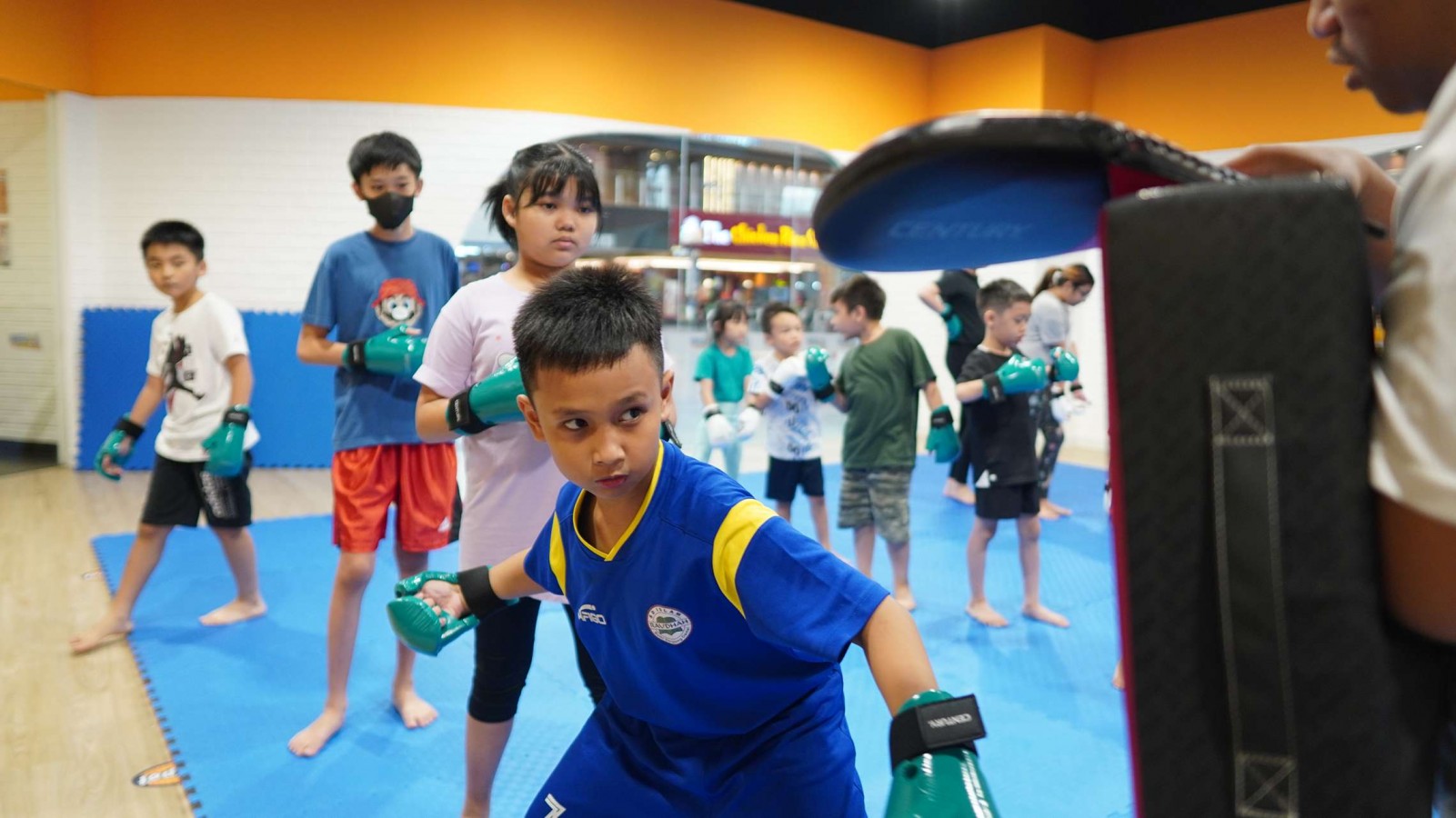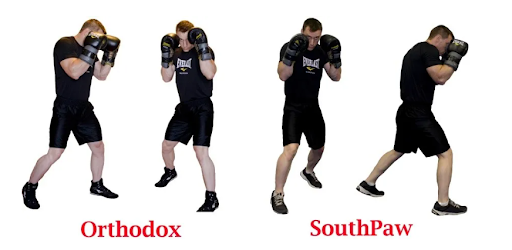A Guide to Proper Muay Thai Stance and Balance

Ever wondered why Muay Thai fighters look so calm and unshakable, even when they’re facing an opponent who’s ready to throw kicks, punches, and elbows at them? The secret is on their stance and balance!
In this guide, we’ll break down the basic stance, explain the difference between orthodox and southpaw, and dive into the details of foot, arm, elbow, hand, and head positioning, as well as how to maintain body balance and use effective footwork.
Why Stance Matters in Muay Thai
Think of your stance like the base of a building. No matter how tall or beautifully designed a structure is, if the foundation is weak, the whole thing collapses. The same goes for Muay Thai: without a solid stance, even the strongest punch or most beautiful kick will leave you off-balance and vulnerable.
A proper stance helps you:
- Stay balanced while moving or striking.
- Protect your body from attacks.
- Generate maximum power in punches, kicks, knees, and elbows.
- Transition smoothly between offense and defense.
The Basic Muay Thai Stance
The standard Muay Thai stance is slightly different from boxing or kickboxing because it’s designed to defend against strikes from fists, legs, elbows, and knees. Here’s how to set it up step by step:
A. Feet positioning
- Stand with your feet shoulder-width apart.
- Place your lead foot (left foot if orthodox, right foot if southpaw) a step forward.
- Keep your back foot slightly angled outward for balance.
B. Knees and legs
- Bend your knees slightly but don’t lock them.
- Stay light on the balls of your feet so you can check kicks, pivot, or move quickly.
C. Arms and elbows
- Raise your hands near your face to protect your jaw.
- Keep elbows tucked in close to your ribs to block body shots.
D. Hands
- Lead hand slightly forward at eyebrow height, ready to jab or parry.
- Rear hand closer to your chin, prepared to block or deliver powerful crosses.
E. Head
- Keep your chin slightly tucked in to avoid being hit cleanly.
- Eyes forward, always watching your opponent’s chest or shoulders (so you can catch movements early).
Muay Thai Stance: Orthodox vs. Southpaw Stance

In Muay Thai, your stance depends on which side feels stronger and more natural. There are two muay thai stances you can choose:
1. Orthodox Stance
The orthodox stance is the most common stance in Muay Thai, and it is typically used by right-handed fighters. In this stance, the left foot is placed forward while the right foot stays slightly back, forming a stable base that allows quick movement in all directions.
Your left hand becomes the lead hand, responsible for jabs, measuring distance, and setting up combinations, while the right hand becomes the power hand, ready to deliver heavy crosses and hooks.
Because the dominant leg is in the rear, fighters in the orthodox stance can generate tremendous power with the right roundhouse kick, one of the most feared weapons in Muay Thai.
The orthodox stance is considered the “default” stance for beginners because it feels natural for most people and offers a balanced mix of offense and defense. Fighters in this stance can use their lead jab to control range and disrupt their opponent’s rhythm while keeping their right hand and right leg loaded for powerful counterattacks.
It also allows effective use of the left push kick (teep) to maintain distance. Many classic Muay Thai legends fought in the orthodox stance, relying on their strong right kicks and crosses to dominate opponents.
2. Southpaw Stance
The southpaw stance is less common, making it tricky and often uncomfortable for orthodox fighters to face. This stance is typically used by left-handed fighters, though some right-handed fighters also train in southpaw to gain a strategic advantage.
In this stance, the right foot steps forward, with the left foot behind, and the right hand becomes the lead hand, used for quick jabs, parries, and setups. The left hand, positioned closer to the rear, serves as the power hand, delivering devastating left crosses and hooks.
One of the biggest strengths of the southpaw stance is the element of surprise. Since most fighters train primarily against orthodox opponents, they are less familiar with southpaw angles, footwork, and attacks.
This creates openings for the southpaw to land strikes, especially the powerful left roundhouse kick to the body or arm of the orthodox fighter, which is difficult to block effectively. Additionally, the southpaw’s left cross often lands cleanly because it comes from an unexpected angle, threading through an orthodox guard.
Footwork in Muay Thai
Good footwork is what separates a beginner from a skilled fighter. Unlike boxing, Muay Thai footwork is often simpler but must always keep you ready to attack or defend.
Several key principles of Muay Thai footwork:
- Step, don’t hop. Always keep your feet in contact with the ground for stability.
- Move in small steps. Large steps expose you to counters.
- Lead foot moves first. If stepping forward, the lead foot goes first; if backward, the rear foot goes first.
- Check kicks with balance. Always return your checking leg quickly to its position.
- Pivoting. Use pivots to cut angles, avoid attacks, or set up counters.
Master Your Muay Thai Stance With Us!
Mastering the proper Muay Thai stance and balance is the key to building confidence, power, and precision inside the ring. And if your children are showing interest in Muay Thai, as parents you can take that first step by enrolling them into the martial arts program at Rockstar Academy.
Recognized as the best Sports & Performing Arts Academy, Rockstar Academy offers a wide range of physical activity programs supported by a strong curriculum. Students even get the chance to participate in RockOlympics, an incredible learning experience that helps them discover their true potential.
Not only that, Rockstar Academy also provides Private Instruction Programs, offering highly personalized, skills-based training tailored to each student’s individual needs and goals.
With intensive one-on-one guidance, progress reports, training videos, and weekly exercises to continue practicing at home. To see the benefits firsthand, you can also sign up for a free trial class!
FAQ
Why is stance more important than learning techniques first?
Because every technique in Muay Thai starts from your stance. Without a strong base, your strikes lose power and your defense becomes weak.
How can I improve my balance in Muay Thai?
Practice shadowboxing while focusing on smooth weight shifting. Balance muay thai drills like standing on one leg or checking kicks repeatedly also help. Most importantly, stay relaxed and keep your knees slightly bent.



